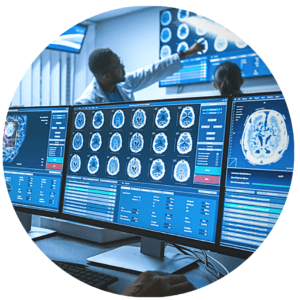Parkinson’s Surgical Therapies
As Parkinson’s symptoms progress, increasing medications to address them can bring significant side effects, such as dyskinesia. Several therapies can be explored after medications are optimized, and the side effects of adding more medications outweigh the benefits the medications provide. Current Parkinson’s surgical therapies include deep brain stimulation (DBS) and enteral suspension of carbidopa/levodopa. Focused ultrasound therapy (FUS) is a non-invasive image-guided therapy that’s an alternative to surgical interventions.
In this collection, you’ll find the latest resources about these therapies for treating Parkinson’s symptoms.
Click here to explore more Parkinson’s Topics.

The Benefits of Enteral Suspension of Carbidopa/Levodopa for People with Parkinson’s
Carbidopa/levodopa is known as the gold–standard medication used to treat Parkinson’s. However, as Parkinson’s progresses, the effectiveness of the medication at the same dose decreases, and many people begin looking for alternatives. One such option is enteral suspension of carbidopa/levodopa (branded under the name Duopa™ in the US), which is delivered through a pump directly into your intestines to improve absorption and has been shown to decrease OFF time. We sat down with Sharon Jung, a nurse practitioner at Puget Sound Neurology in Tacoma, WA, to discuss this surgical therapy.
Deep Brain Stimulation (DBS)
DBS is a highly effective and reasonably safe treatment for many of the cardinal motor symptoms of Parkinson’s. And with advances in its technology being made every day, there are more avenues for people with Parkinson’s to explore when it comes to systems, leads, batteries, surgeons, and more.
Focused ultrasound Therapy (FUS)
Focused ultrasound therapy (FUS) is an early-stage, single-procedure, non-invasive technology to manage tremor and dyskinesia. It is FDA-approved and is approved to treat tremor outside the US as well. It treats Parkinson’s symptoms through focused beams of ultrasonic energy that target specific areas deep in the brain, interrupting circuits involved with tremor and dyskinesia.




